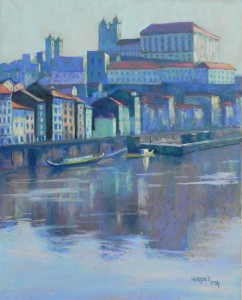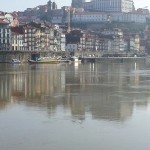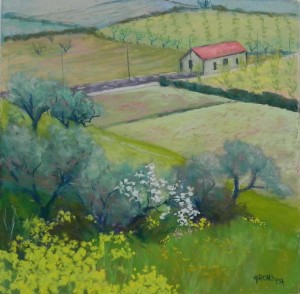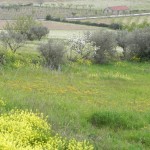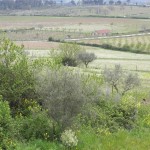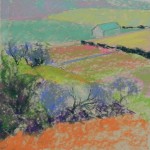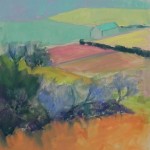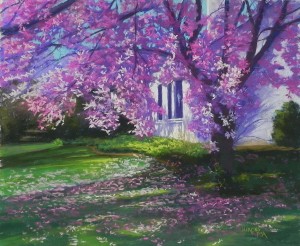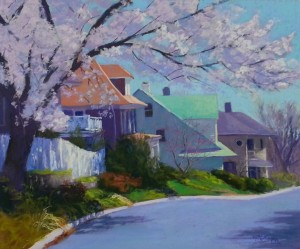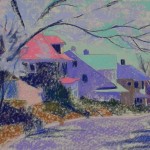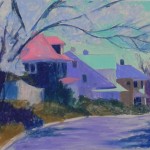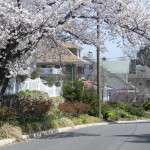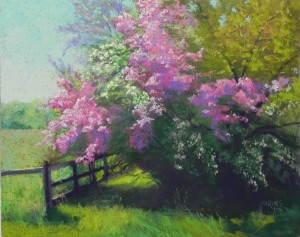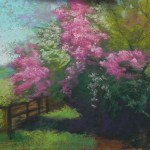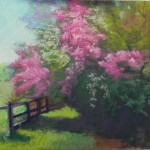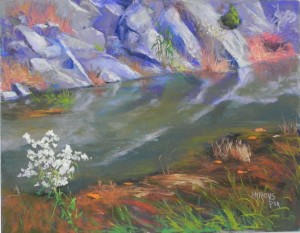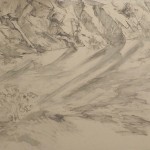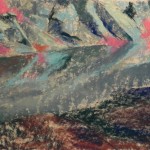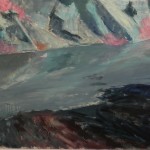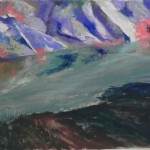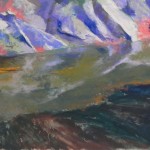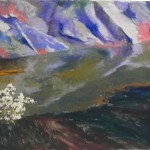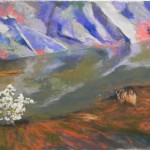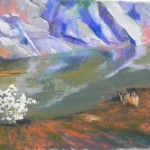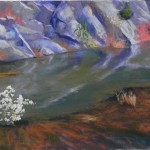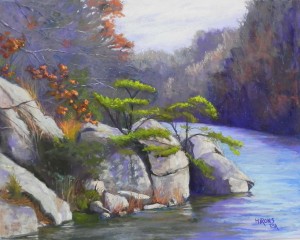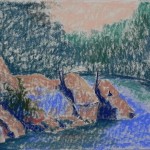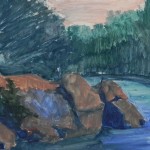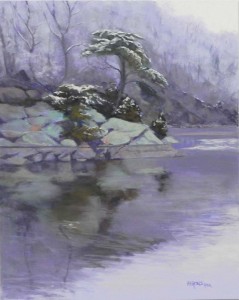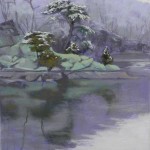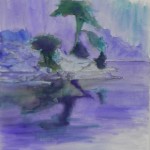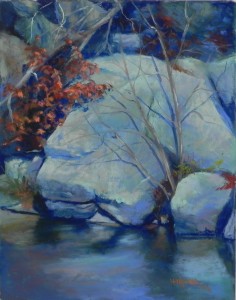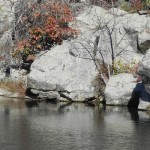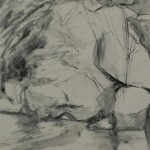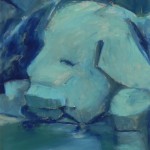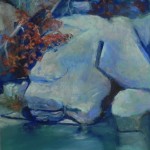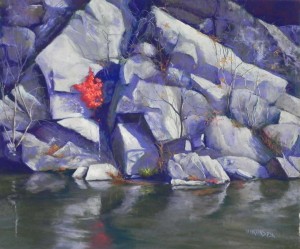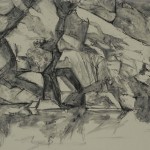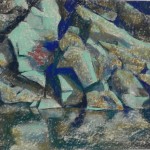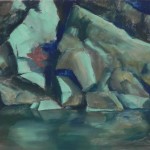I began this painting a couple weeks ago and just finished it today. I kept seeing more things I wanted to change! Now, I’m finally happy with it. I don’t seem to have a picture of the underpainting, so I’ll include the reference photo and final painting. I made two significant changes to the original photo. First, compositionally, I gave the shoreline more of an angle. I wanted to play on the triangles of buildings and reflections. I also left out a small boat on the left that I didn’t like and did a lot of simplification, particularly in the skyline. I deleted a lot of things at the top of the picture so as to have a clean line of buildings against sky.
The second change, as you can see, is in the color. The photo is gray and brown! My two least favorite colors. I decided to work with a split complement of blue greens, blue violets, and warm red oranges in the roofs. All of it had to be toned down and grayed over, particularly the building at the top. But I really liked the color combination. I began the sky with Giraults but when I came in on the second day, I realized that it was too blue violet and dark. So I used one Ludwig aqua and went over the sky, leaving small pieces of warm orangey underpainting showing through. It felt like the light came on! I liked the simplicity of it.
The buildings at lower left were a challenge because they were the closest and required some details of windows. The photo was very complicated, but I tried to indicate windows without too much detail. The buildings past that were a lot easier! I just used shapes of warm and cool colors to indicate light and shadow.
The water and reflections took some work and I went over it many times. I really liked the small boat with the light hitting it and decided that that would be the center of interest. I omitted other small lights to the right of it that would have been a distraction.
Really happy with the way this one came out.

